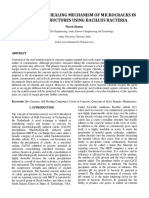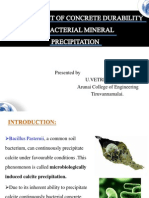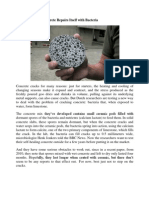Are you searching for 'bacterial concrete thesis'? You will find the answers here.
Table of contents
- Bacterial concrete thesis in 2021
- Bacterial concrete case study
- Conclusion of self-healing concrete
- Self-healing concrete properties
- Scope of self-healing concrete
- Bacterial concrete research papers
- Literature review on self-healing concrete
- Bacterial concrete seminar ppt
Bacterial concrete thesis in 2021
 This picture shows bacterial concrete thesis.
This picture shows bacterial concrete thesis.
Bacterial concrete case study
 This image illustrates Bacterial concrete case study.
This image illustrates Bacterial concrete case study.
Conclusion of self-healing concrete
 This image demonstrates Conclusion of self-healing concrete.
This image demonstrates Conclusion of self-healing concrete.
Self-healing concrete properties
 This picture representes Self-healing concrete properties.
This picture representes Self-healing concrete properties.
Scope of self-healing concrete
 This picture demonstrates Scope of self-healing concrete.
This picture demonstrates Scope of self-healing concrete.
Bacterial concrete research papers
 This image shows Bacterial concrete research papers.
This image shows Bacterial concrete research papers.
Literature review on self-healing concrete
 This picture illustrates Literature review on self-healing concrete.
This picture illustrates Literature review on self-healing concrete.
Bacterial concrete seminar ppt
 This picture shows Bacterial concrete seminar ppt.
This picture shows Bacterial concrete seminar ppt.
How long can bacteria survive in dry concrete?
These spores are viable but dormant cells and can withstand mechanical and chemical stresses and remain in dry state viable for periods over 50 years (Fig. 1). However, when bacterial spores were directly added to the concrete mixture, their life- time appeared to be limited to one-two months [16].
How does bacteria improve the strength of concrete?
The bacterial Bacillus pasteruil in the concentration of 8.6*108 cells/ml can improve the strength of the concrete by forming a calcite layer in the crack. Thus, the strength of the beams has improved back to 81.97% of the original strength.
What happens to calcium lactate in bacterial concrete?
As the bacteria feeds oxygen is consumed and th e soluble calcium lactate is converted to insoluble limestone. The limestone solidifies on the cracked surface, t hereby sealing it up [6]. As the oxygen is consumed by bacteria in the process, it prevents corrosion of the embedded form of leaching.
How is bacterial concrete used for crack remediation?
BACTERIAL CONCRETE (Microbiologically Enhanced Crack Remediation Technique) INTRODUCTION Cracking is an inevitable phenomenon in structures and is one of the inherent weaknesses. Water and other salts seep through these cracks; corrosion initiates, and thus reduces the life of structures.
Last Update: Oct 2021